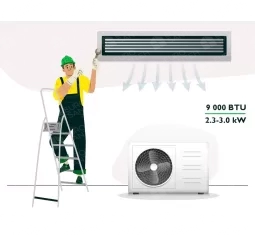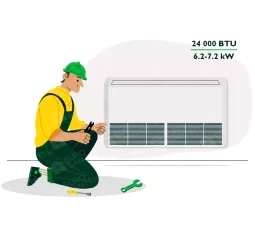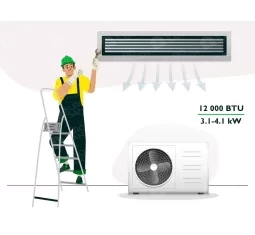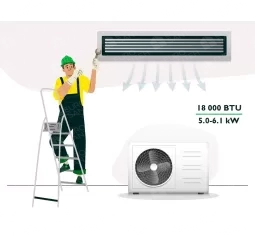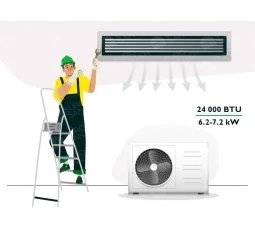Air conditioner installation on a high floor in Chisinau
Air conditioner installation on a high floor presents unique challenges and considerations that require careful planning and execution to ensure optimal performance and safety. Whether it's a residential apartment or a commercial building, installing air conditioning units on upper floors involves addressing structural integrity, access limitations, and environmental factors that can affect the system's efficiency. In this comprehensive guide, we will explore the essential aspects of air conditioner installation on a high floor, detailing the process, key considerations, and best practices to achieve a successful outcome.
Key Considerations
Structural Assessment: Before initiating the installation, a thorough structural assessment of the building is crucial. This assessment ensures that the floor and walls can support the weight and vibrations associated with the air conditioning units. It's essential to consult structural engineers to determine load-bearing capacities and reinforcement requirements if necessary.
Access and Logistics: Accessing a high floor for installation requires specialized equipment and careful logistical planning. This includes considerations for transporting equipment, materials, and personnel safely and efficiently. Elevators, external lifts, or crane services may be required depending on building access and height.
Equipment Selection: Choosing the right air conditioning equipment is critical for performance and energy efficiency. Factors such as the size of the space, cooling capacity, energy efficiency ratings (SEER), and noise levels should be evaluated. For high floors, units with higher SEER ratings are preferred to optimize energy savings and reduce operating costs over time.
Installation Planning: Detailed planning is essential to determine the optimal placement of outdoor and indoor units. Factors such as sunlight exposure, airflow patterns, and aesthetic considerations play a role in deciding where to install units to ensure even distribution of cooled air and minimal disruption to occupants.
Installation Process
The process of installing air conditioners on a high floor typically involves the following steps:
Site Survey and Preparation: Conducting a thorough site survey to assess structural conditions, electrical requirements, and access points. Preparing the installation site involves clearing space for equipment placement and ensuring safety measures are in place for workers and residents.
Mounting Outdoor Units: Installing the outdoor condenser unit is the first step. It is positioned on a stable, level surface that can support its weight and ensure proper ventilation for heat dissipation. Mounting brackets or stands may be used to secure the unit safely.
Installing Indoor Units: Indoor units are mounted inside each room according to the pre-determined layout. Careful attention is given to positioning to optimize airflow and minimize noise levels. Wall-mounted, ceiling-mounted, or ducted units are installed based on space and aesthetic preferences.
Connecting Refrigerant Lines and Wiring: Refrigerant lines and electrical wiring are carefully routed between the outdoor and indoor units. Proper insulation and sealing of connections are crucial to prevent leaks and ensure efficient operation. All connections are tested for integrity before proceeding.
Testing and Commissioning: Once installed, the system undergoes rigorous testing to verify functionality and performance. Technicians test temperature control, airflow, and system responsiveness to ensure everything operates according to specifications. Adjustments are made as needed to optimize performance.
Special Considerations for High Floors
Safety Measures: Implementing strict safety protocols is essential when working at heights. This includes using harnesses, safety nets, and ensuring all equipment meets safety standards to prevent accidents.
Environmental Factors: High floors may experience stronger winds and direct sunlight exposure, impacting the efficiency and cooling capacity of the air conditioning units. Proper insulation and shading can mitigate these effects.
Maintenance Accessibility: Planning for regular maintenance and servicing is critical for prolonging the lifespan of the air conditioning system. Ensuring easy access for technicians to perform inspections and repairs reduces downtime and enhances system reliability.
Conclusion
Installing air conditioners on a high floor requires expertise, meticulous planning, and adherence to safety standards. By conducting thorough assessments, selecting appropriate equipment, and following a structured installation process, building owners can achieve efficient and reliable cooling solutions for their spaces. Professional installation ensures not only immediate comfort but also long-term energy savings and operational efficiency. Choosing experienced HVAC contractors familiar with high-rise installations is key to successfully navigating the complexities of air conditioner installation on upper floors and ensuring client satisfaction with the results.

